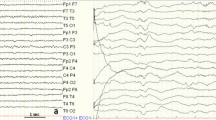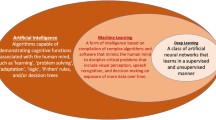Abstract
Infantile spasms (ISS) is a devastating epileptic syndrome that affects children under the age of 1 year. The diagnosis of ISS is based on the semiology of the seizure and the electroencephalogram (EEG) background characterized by hypsarrhythmia (HYPS). However, even skilled electrophysiologists may interpret the EEG of children with ISS differently, and commercial software or existing epilepsy detection algorithms are not helpful. Since EEG is a key factor in the diagnosis of ISS, misinterpretation could result in serious consequences including inappropriate treatment. In this paper, we developed a novel algorithm to localize the relevant electrical abnormality known as epileptic discharges (or spikes) to provide a quantitative assessment of ISS in HYPS. The proposed algorithm extracts novel time–frequency features from the EEG signals and localizes the epileptic discharges associated with ISS in HYPS using a support vector machine classifier. We evaluated the proposed method on an EEG dataset with ISS subjects and obtained an average true positive and false negative of 98 and 7%, respectively, which was a significant improvement compared to the results obtained using the clinically available software. The proposed automated method provides a quantitative assessment of ISS in HYPS, which could significantly enhance our knowledge in therapy management of ISS.






Similar content being viewed by others
References
Baram TZ (2007) Models for infantile spasms: an arduous journey to the holy grail. Ann Neurol 61(2):89–91
Battenberg E, Wessel D (2009) Accelerating nonnegative matrix factorization for audio source separation on multi-core and many-core architectures. In: ISMIR, pp 501–506
Becker JM, Sohn C, Rohlfing C (2014) NMF with spectral and temporal continuity criteria for monaural sound source separation. In: 2014 Proceedings of the 22nd European signal processing conference (EUSIPCO). IEEE, pp 316–320
Boashash B (2003) Time frequency analysis. Gulf Professional Publishing, Houston
Cai S, Yang S, Zheng F, Lu M, Wu Y, Krishnan S (2013) Knee joint vibration signal analysis with matching pursuit decomposition and dynamic weighted classifier fusion. Comput Math Methods Med 2013:904267
Cohen L (1995) Time–frequency analysis, vol 1. Prentice Hall, Upper Saddle River
Ghoraani B, Krishnan S (2011) Time–frequency matrix feature extraction and classification of environmental audio signals. IEEE Trans Audio Speech Lang Process 19(7):2197–2209
Ghoraani B, Krishnan S (2009) A joint time-frequency and matrix decomposition feature extraction methodology for pathological voice classification. EURASIP J Adv Signal Process (ID 928974). doi:10.1155/2009/928974
Hunter DR, Lange K (2004) A tutorial on mm algorithms. Am Stat 58:30–37
Hussain SA, Kwong G, Millichap JJ, Mytinger JR, Ryan N, Matsumoto JH, Wu JY, Lerner JT, Sankar R (2015) Hypsarrhythmia assessment exhibits poor interrater reliability: a threat to clinical trial validity. Epilepsia 56(1):77–81
Hwang WJ, Wang SH, Hsu YT (2014) Spike detection based on normalized correlation with automatic template generation. Sensors 14(6):11049–11069
Jeavons PM, Bower BD (1961) The natural history of infantile spasms. Arch Dis Child 36(185):17
Jones RD, Dingle A, Carroll GJ, Green RD, Black M, Donaldson IM, Parkin PJ, Bones PJ, Burgess KL et al (1996) A system for detecting epileptiform discharges in the EEG: real-time operation and clinical trial. In: Engineering in medicine and biology society, 1996. Bridging disciplines for biomedicine. Proceedings of the 18th annual international conference of the IEEE, vol 3. IEEE, pp 948–949
Kameoka H, Ono N, Kashino K, Sagayama S (2009) Complex NMF: A new sparse representation for acoustic signals. In: IEEE international conference on Acoustics, speech and signal processing, 2009. ICASSP 2009. IEEE, pp 3437–3440
Kim S, McNames J (2007) Automatic spike detection based on adaptive template matching for extracellular neural recordings. J Neurosci Methods 165(2):165–174
Liu YC, Lin CCK, Tsai JJ, Sun YN (2013) Model-based spike detection of epileptic EEG data. Sensors 13(9):12536–12547
Lodder SS, Askamp J, van Putten MJ (2013) Inter-ictal spike detection using a database of smart templates. Clin Neurophysiol 124(12):2328–2335
Mallat SG, Zhang Z (1993) Matching pursuits with time-frequency dictionaries. IEEE TSP 41(12):3397–3415
Nenadic Z, Burdick JW (2005) Spike detection using the continuous wavelet transform. IEEE Trans Biomed Eng 52(1):74–87
Pellock JM, Hrachovy R, Shinnar S, Baram TZ, Bettis D, Dlugos DJ, Gaillard WD, Gibson PA, Holmes GL, Nordli DR et al (2010) Infantile spasms: a US consensus report. Epilepsia 51(10):2175–2189
Riikonen R (2001) Epidemiological data of West syndrome in Finland. Brain Dev 23(7):539–541
Tan VYF, Févotte C (2013) Automatic relevance determination in nonnegative matrix factorization with the/spl beta/-divergence. IEEE Trans Pattern Anal Mach Intell 35(7):1592–1605
Tjoa SK, Liu KR (2010) Multiplicative update rules for nonnegative matrix factorization with co-occurrence constraints. In: 2010 IEEE international conference on acoustics speech and signal processing (ICASSP). IEEE, pp 449–452
Traitruengsakul S, Seltzer L, Paciorkowski AR, Ghoraani B (2015) Automatic localization of epileptic spikes in eegs of children with infantile spasms. In: Annual international conference of the IEEE engineering in medicine and biology society (EMBC), pp 6194–6197
Zaveri HP, Duckrow RB, Spencer SS (2006) On the use of bipolar montages for time-series analysis of intracranial electroencephalograms. Clin Neurophysiol 117(9):2102–2108
Author information
Authors and Affiliations
Corresponding author
Rights and permissions
About this article
Cite this article
Traitruengsakul, S., Seltzer, L.E., Paciorkowski, A.R. et al. Developing a novel epileptic discharge localization algorithm for electroencephalogram infantile spasms during hypsarrhythmia. Med Biol Eng Comput 55, 1659–1668 (2017). https://doi.org/10.1007/s11517-017-1616-z
Received:
Accepted:
Published:
Issue Date:
DOI: https://doi.org/10.1007/s11517-017-1616-z




